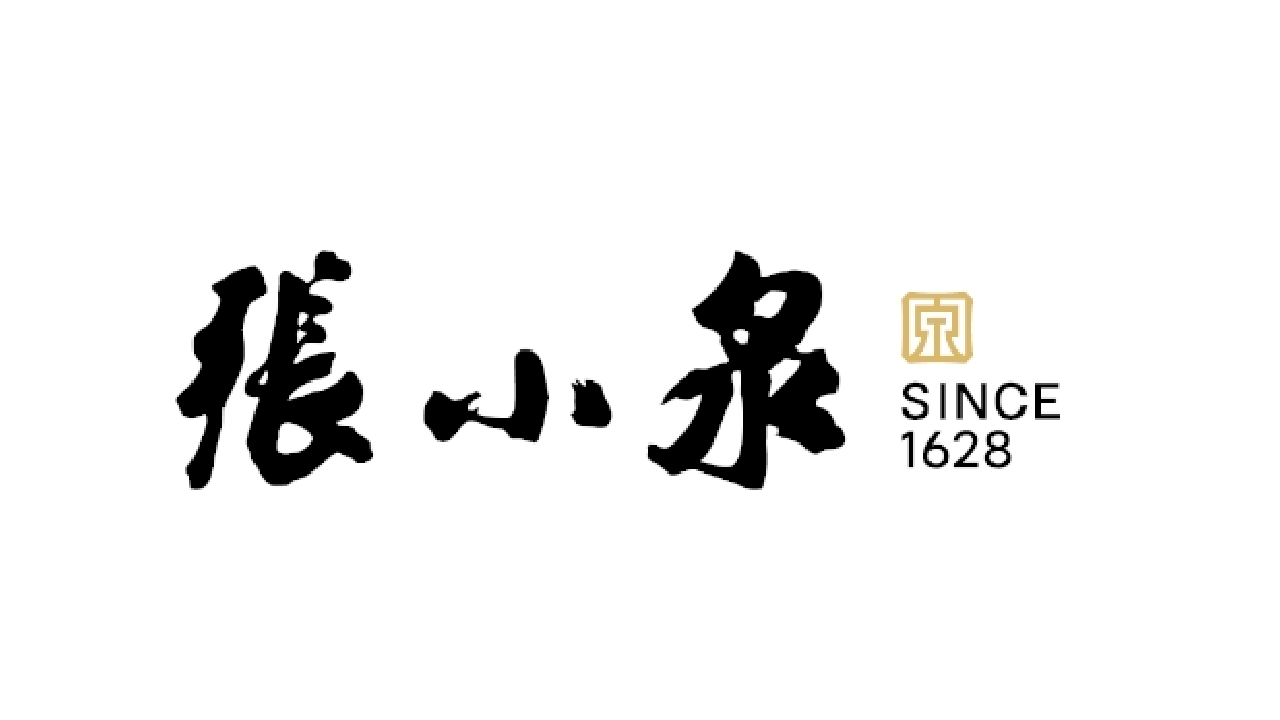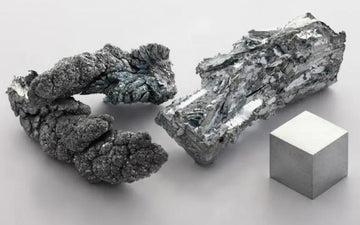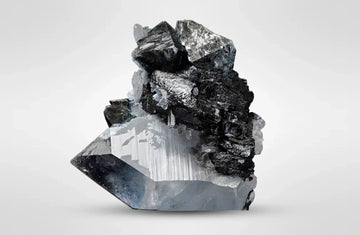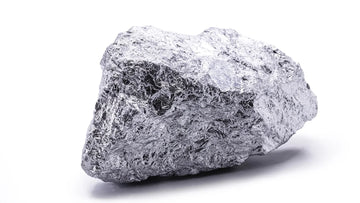In the world of kitchen knives, there's a metal called manganese that does important work even though we rarely talk about it. It doesn't get as much attention as carbon or chromium, but many of our favorite knives wouldn't cut as well or last as long without manganese. This metal helps make knives stronger and sharper in ways that matter when you're chopping vegetables or slicing meat.
What Is Manganese?
Manganese is a metal that looks silvery-gray, much like iron but a bit lighter in color. You won't find pure manganese in your kitchen, but small amounts of it hide inside your knife's steel. It's element number 25 on the science charts, sitting quietly between chromium and iron.

This metal is quite hard but breaks rather than bends when put under too much pressure. It melts at 1,244°C (2,271°F), which is important when knife makers mix it with other metals to create steel for blades.
Most kitchen knives contain between 0.15% and 2% manganese - not much, but enough to make a real difference in how the knife works. Think of it like salt in cooking - you don't need a lot, but without it, something important would be missing.
How Manganese Makes Knives Better
Helps Knives Get Harder
When knife makers heat and cool steel to make it hard (a process called "Quenching"), manganese makes this process work better. It allows the steel to harden more deeply and evenly, even when cooled less dramatically.

Without manganese, knife makers would have to cool hot steel very quickly in water, which often causes the blade to warp or crack. With manganese added, they can use slower-cooling oil instead, getting the same hardness with fewer problems. This is how knives reach hardness levels between 58-62 HRC (the scale used to measure metal hardness).
A knife maker once told me, "Manganese is like that friend who makes sure everyone gets to the party safely. It makes sure the steel transforms properly without cracking under pressure."
Cleans Up Steel
Raw steel often contains sulfur, which can cause major problems. Sulfur makes hot steel crack during forging (when the knife maker hammers the hot metal into shape). Manganese acts like a cleaner by grabbing onto sulfur and forming manganese sulfide, which is much less harmful.
This cleaning action allows knife makers to work the hot steel between 850-1200°C without it falling apart. This is especially important for making complex blade shapes like those in Japanese kitchen knives.
Makes Knives Tougher
When added at 0.5-2%, manganese makes steel 40-50% tougher than plain carbon steel. This doesn't mean the knife is softer - it means the steel can absorb more force without breaking.
This toughness allows knife makers to create thinner edges that still hold up during use. Think about a thin Japanese vegetable knife or a flexible fillet knife - without manganese, these designs would chip much more easily.

What This Means When You're Using the Knife
Stays Sharp Longer
Manganese helps knives hold their edge in several ways. First, it ensures the steel hardens properly throughout. Second, it creates structures in the steel that resist wear. Third, the steel actually gets a bit harder during use due to something called "work hardening."
Tests show that knives with good manganese content (like those made from 65Mn steel) can cut through 75% more carrots than similar knives without manganese before needing resharpening.
Rust Behavior
Manganese doesn't make knives rustproof as chromium does, but it does help a little with corrosion. Knives with manganese still need proper care:
- Dry them right after use
- Oil them weekly with food-safe mineral oil
- Clean off acidic food (like lemon juice) within 30 minutes
A chef once said to me, "A manganese knife is like a good work shirt - it's tough and reliable, but you still need to wash it right and hang it properly."
Sharpening Experience
The same qualities that help manganese knives stay sharp also make them a bit harder to sharpen:
- They need about 25% more pressure when sharpening
- Sharpening takes about 15% longer
- They tend to form more of a "burr" (the thin wire edge that forms during sharpening)
For best results when sharpening these knives:
- Use coarse stones (220-400 grit) for major edge repairs
- Use medium to fine stones (1000-3000 grit) for regular sharpening
- Consider using a leather strop with diamond compound for finishing
Common Kitchen Knives with Manganese
Many popular knife steels contain manganese for better performance. Let's look at some you might find when shopping for kitchen knives:
Chinese Steel Types
5Cr15MoV contains a maximum of 1% manganese alongside 0.5% carbon and 15% chromium. This budget-friendly steel appears in many affordable kitchen knives. Its manganese content helps it reach 54-56 HRC hardness while still maintaining good toughness for everyday cutting.
7Cr17MoV contains a maximum of 1% manganese with 0.7% carbon and 17% chromium. The higher manganese and chromium content provide better edge retention and corrosion resistance than 5Cr15MoV. Many mid-range Chinese kitchen knives use this steel, which reaches 56-58 HRC hardness.
8Cr13MoV contains a maximum of 0.8% manganese along with 0.8% carbon and 13% chromium. Often called "Chinese 440C," this popular steel balances edge retention, toughness, and corrosion resistance. The manganese helps it achieve 56-58 HRC while maintaining good stability during heat treatment.
9Cr18MoV features approximately 0.8% manganese, paired with 0.9% carbon and 18% chromium. This higher-end Chinese steel offers excellent corrosion resistance and good edge retention due to its balanced manganese content. It typically reaches 58-60 HRC hardness.
10Cr15CoMoV contains a maximum of 0.5% manganese along with 1.0% carbon, 15% chromium, and cobalt. This premium Chinese steel approaches Japanese steel performance, with manganese helping it achieve hardness of 60-62 HRC while maintaining reasonable toughness.
Japanese Steel Types
White Steel (Shirogami) contains manganese across all its grades:
- White Steel #1 (Shirogami #1) contains approximately 0.2-0.4% manganese alongside its high carbon content (1.25-1.35%). This highest-grade white steel achieves 63-65 HRC hardness, with manganese ensuring proper heat treatment despite its extreme carbon content.
- White Steel #2 (Shirogami #2) includes about 0.2-0.4% manganese with 1.05-1.15% carbon. The manganese helps this most popular white steel grade achieve 61-63 HRC while maintaining better toughness than #1.
- White Steel #3 (Shirogami #3) contains approximately 0.2-0.4% manganese with lower carbon (0.8-0.9%). Reaching 58-60 HRC, this grade relies on manganese for proper hardening despite its lower carbon content, making it more forgiving for beginners.
Blue Steel (Aogami) also contains manganese across all its varieties:
- Blue Steel #1 (Aogami #1) contains about 0.2-0.4% manganese with high carbon (1.25-1.35%) plus chromium and tungsten. The manganese works with these elements to achieve exceptional edge retention while reaching 64-65 HRC hardness.
- Blue Steel #2 (Aogami #2) includes approximately 0.2-0.4% manganese alongside 1.05-1.15% carbon plus chromium and tungsten. This most popular blue steel grade reaches 62-63 HRC, with manganese ensuring proper heat treatment and toughness.
- Blue Super Steel (Aogami Super) contains approximately 0.3-0.5% manganese, 1.4-1.5% carbon, plus chromium, tungsten, molybdenum, and vanadium. This premium steel reaches 64-66 HRC, with manganese helping manage the complex interaction of multiple alloying elements during heat treatment.
Silver Steel (Ginsan) primarily comes in one type:
- Silver Steel #3 (Ginsan #3) contains about 0.5-0.7% manganese, along with approximately 0.95-1.10% carbon and 13-14.5% chromium. This stainless Japanese steel relies on its higher manganese content for proper hardening and toughness. It typically reaches 59-62 HRC and offers a good balance of sharpness and corrosion resistance.
VG-10 includes approximately 0.5% manganese alongside its 1% carbon and 15% chromium. This popular Japanese stainless steel uses manganese to enhance hardness (60-62 HRC) and edge stability. Brands like Shun and Tojiro frequently use VG-10 for their kitchen knives.
AUS-6 contains about 0.5% manganese with 0.65% carbon and 13-14% chromium. This entry-level Japanese stainless steel uses manganese to help reach 55-57 HRC hardness. Many affordable Japanese knives use this balanced steel.
AUS-8 features approximately 0.5% manganese alongside 0.75% carbon and 14-15% chromium. Considered a good mid-range steel, manganese helps AUS-8 achieve 58-59 HRC while maintaining decent toughness. It's easier to sharpen than VG-10 but doesn't hold an edge quite as long.
AUS-10 includes about 0.5% manganese with 1% carbon and 13-14.5% chromium. This upgraded version of AUS-8 uses manganese to help reach 59-60 HRC hardness while maintaining good stability. Brands like MAC use variations of this steel in their better knives.
German Steel Types
X50CrMoV15 contains approximately 0.5% manganese along with 0.5% carbon and 15% chromium. This common German steel uses manganese to improve hardenability and toughness. It typically reaches 54-56 HRC and appears in many Wüsthof and Zwilling knives.
X55CrMoV14 includes about 0.5% manganese with 0.55% carbon and 14% chromium. The manganese helps this German steel achieve slightly higher hardness (55-57 HRC) than X50CrMoV15 while maintaining excellent toughness. Messermeister often uses this formulation.
1.4116 contains approximately 0.5% manganese alongside its chromium content. Used by many German manufacturers including Wüsthof, this steel relies on manganese for proper heat treatment and toughness. It reaches around 56-58 HRC hardness.
1.4528 (also called N690) includes approximately 0.5-0.8% manganese with 1.07% carbon and 17% chromium. This premium German/Austrian stainless steel relies on manganese for proper hardening and toughness despite its high alloy content. It reaches a hardness of 58-60 HRC and appears in some high-end German knives.
Cronidur 30 contains about 0.3-0.5% manganese alongside its high nitrogen and chromium content. This advanced German stainless steel was originally developed for aerospace applications. Its manganese content helps with processing and heat treatment, allowing it to reach 58-60 HRC while maintaining excellent corrosion resistance. A few premium German knife makers use this specialized steel.
Each of these steels uses manganese in slightly different ways, working alongside other elements to create the perfect balance of hardness, toughness, and corrosion resistance for specific kitchen tasks.
Is Manganese in Knives Safe?
Manganese in knife steel is extremely stable and safe. Tests show less than 0.01 parts per million leaches into food, even when soaked in vinegar for 24 hours. The metal stays locked in the steel's structure and doesn't migrate during normal cooking.
Taking Care of Manganese-Containing Knives
For best results with these knives:
- Wash by hand with mild soap
- Dry immediately with a soft cloth
- Apply a drop of food-grade mineral oil weekly
- Store in a knife block or on a magnetic rack
- Sharpen at a 15-20° angle on each side
Final Thoughts
Manganese might not be famous like carbon or chromium, but it quietly makes our kitchen knives better. It allows knife makers to balance hardness and toughness while avoiding manufacturing problems.
These knives need more care than stainless steel options but reward you with better edge retention and cutting performance. Understanding manganese's role helps you choose between different types of knives and care for them properly.
As one old knife maker said to me, "Manganese is like the quiet worker who never seeks praise but makes everyone else's job easier. You don't see it, but you'd certainly miss it if it wasn't there."
FAQs
Is manganese steel good for Kitchen knives?
Manganese steel is beneficial for kitchen knives as a component, not as the primary material. Most quality kitchen knives contain 0.15-2% manganese added to other steels. This small amount improves hardness and toughness while helping with heat treatment. Chinese 65Mn steel (with 1% manganese) makes good budget cleavers, but pure manganese steel would be too brittle for kitchen use.
What is the difference between manganese steel and carbon steel knives?
Manganese steel contains high manganese content (12-14%) and is extremely tough but difficult to sharpen, making it unsuitable for kitchen knives. Carbon steel knives contain 0.5-2% carbon with small amounts of manganese (0.2-1%) as an additive. Traditional kitchen knives are actually carbon steel with manganese added, not pure manganese steel. Carbon steel takes a sharper edge while manganese improves hardenability and strength.
Is manganese good for blades?
Yes, manganese is excellent for blades when used as an alloying element in proper amounts (typically 0.2-1%). It improves steel hardenability, captures harmful sulfur, increases toughness, and contributes to edge retention. Almost all quality kitchen knife steels contain manganese. However, too much manganese (over 2%) makes steel difficult to sharpen, which is counterproductive for kitchen knives.
Is manganese better than stainless steel?
Manganese and stainless steel aren't comparable categories. Manganese is an element added to most steels (including stainless), while stainless steel is a steel type containing at least 13% chromium. Good stainless kitchen knives contain both chromium (for corrosion resistance) and manganese (for hardenability and toughness). Each element serves different purposes, with manganese improving steel quality regardless of whether it's stainless or carbon steel.
What are the disadvantages of manganese steel?
High-manganese steel (12%+ manganese) has several disadvantages for kitchen knives: extreme difficulty in sharpening, poor initial sharpness, excessive toughness at the expense of hardness, and limited corrosion resistance. It's better suited for railroad tracks and excavator buckets than kitchen tools. Small amounts of manganese (0.2-1%) in knife steel have no significant disadvantages, which is why virtually all kitchen knives contain this amount.
How much manganese do Japanese kitchen knives contain?
Japanese kitchen knives typically contain 0.2-0.7% manganese, varying by steel type. White Steel (Shirogami) contains 0.2-0.4% manganese across all grades (#1, #2, #3). Blue Steel (Aogami) contains 0.2-0.4% in regular grades and 0.3-0.5% in Blue Super. Higher-end stainless steels like VG-10 and Ginsan #3 contain approximately 0.5-0.7% manganese. These amounts are carefully balanced to improve heat treatment without interfering with sharpening properties.
Does manganese content affect knife sharpening?
Yes, manganese affects knife sharpening significantly. Small amounts (0.2-1%) improve steel's response to heat treatment, creating a finer grain structure that takes a better edge. However, knives with higher manganese content (over 1%) require about 25% more pressure when sharpening and take 15% longer to develop a burr. Very high manganese steels (over 10%) are extremely difficult to sharpen and rarely used for kitchen knives specifically for this reason.
Can manganese in kitchen knives rust?
Manganese itself doesn't prevent rust—that's chromium's job. Steel with only manganese and no chromium (like 65Mn) will rust relatively easily. However, manganese can form manganese sulfide compounds that provide slight protection against certain types of corrosion. For genuinely rust-resistant knives, look for steels that combine manganese (for hardenability and toughness) with at least 13% chromium (for corrosion resistance), like X50CrMoV15 or VG-10.
Which kitchen tasks benefit most from manganese in knife steel?
Kitchen tasks involving impact and toughness benefit most from manganese's contributions. Chinese cleavers used for chopping through smaller bones, Western chef's knives used for rock chopping on hard cutting boards, and heavy-duty butchering all benefit from manganese's improvement to steel toughness. It helps prevent chipping and cracking under stress. The improved hardenability from manganese also helps knives maintain their edge during repetitive cutting tasks like vegetable prep.
What kitchen knife steel has the highest manganese content?
Among common kitchen knife steels, Chinese 65Mn has one of the highest practical manganese contents at approximately 1%. Some German steels like 4116 contain 0.5-0.8% manganese. True high-manganese steels (with 12-14% manganese) are rarely used for kitchen knives because they're too difficult to sharpen. For kitchen use, moderate manganese content (0.4-0.8%) generally provides the best balance, which is why steels like X50CrMoV15, AUS-10, and Ginsan #3 are popular choices for quality kitchen knives.





